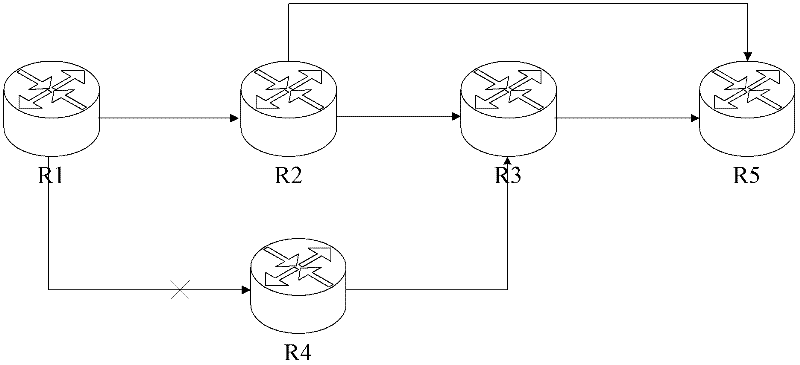Loose node in RSVP-TE (Resource Reservation Protocol-Traffic Engineer) tunnel and path calculation method of loose node
A technology of RSVP-TE and path calculation, applied in the field of data network communication, it can solve the problems of tunnel establishment, failure to establish successfully, etc., and achieve the effect of reducing the possibility of loops
- Summary
- Abstract
- Description
- Claims
- Application Information
AI Technical Summary
Problems solved by technology
Method used
Image
Examples
Embodiment
[0043] Such as figure 2 As shown, this embodiment provides a method for calculating a loose node path in an RSVP-TE tunnel, including:
[0044] S101: Each node in the RSVP-TE tunnel sends a PATH message carrying the router ID of the node to the downstream node;
[0045] In this embodiment, as a preferred manner, the router ID of the current node may be added to the excluded route object XRO of the PATH message.
[0046] In addition, expand the flag field in the SESSION ATTRIBUTE object of the PATH message, and define a new flag, such as 0x20, indicating that the router ID of the node needs to be automatically added to the XRO, so that when the downstream node receives the PATH message, it can update the PATH The SESSION ATTRIBUTE object of the message is identified to determine whether the router ID of this node needs to be automatically added to the XRO.
[0047] For example, when the head node in the RSVP-TE tunnel sends a PATH message to the downstream node, it automatic...
PUM
 Login to View More
Login to View More Abstract
Description
Claims
Application Information
 Login to View More
Login to View More - R&D
- Intellectual Property
- Life Sciences
- Materials
- Tech Scout
- Unparalleled Data Quality
- Higher Quality Content
- 60% Fewer Hallucinations
Browse by: Latest US Patents, China's latest patents, Technical Efficacy Thesaurus, Application Domain, Technology Topic, Popular Technical Reports.
© 2025 PatSnap. All rights reserved.Legal|Privacy policy|Modern Slavery Act Transparency Statement|Sitemap|About US| Contact US: help@patsnap.com



